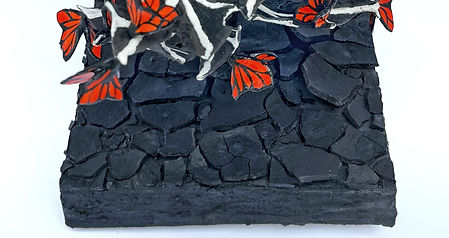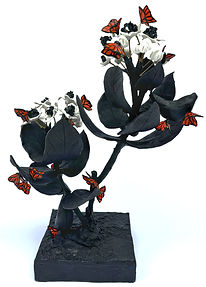
SATYANASI
On our way back from Shimla, while staring out of the car window, I saw these beautiful bright yellow flowers that kept passing by. I had to ask the car to be stopped right away! Untaken care of, these delicate flowers were proudly growing on roadsides. What also caught my attention was how these extremely delicate petals were surrounded by these thick, prickly, cactus looking leaves. As if guarding the flower. I was surprised to know that the plant is called Satyanasi !
Satyanasi in English means devastating. On doing a bit of research I understood why. The plant is an invasive weed that is not only toxic to humans and animals, but also harmful to seedlings awaiting germination. In some cultures, they have been used for their psychoactive abilities. However, it has also been used in traditional medicine, like the Ayurveda, for centuries! They are found along the roadsides, disturbed vegetation, waste lands and human habitations where the quality of soil tends to be poor. It does not care for the soil, or the care given to it. All that it knows is to survive.

Staring back at you as you pass by, Satyanasi tells the story of beauty, survival, and respect. Where if you respect it, it is medicine. However, if you abuse it, it is poison.



SATYANASI1
Measurements (cm) : 32 X 30 X 25 (approx)


SATYANASI 2
Measurements (cm) : 20 X 40 X 32 (approx)






ABOUT THE PIECE
While the Satyanasi had many interesting aspects like the details in the flower, the fruit and the soil, all of which needed separate attention, what attracted me the most was the play of textures that they showed. Delicate flowers surrounded by what can only be explained as total chaos.

The beautiful Satyanasi flower is very detailed. Each part needed to be attended to separately. The thorns on the stigma of the flower were attached one by one. Brass wires have been used for the other details.




The Satyanasis that I chose for my project, were standing on very poor quality soil. For the smaller sculpture, a coarser black clay has been used to show the lack of nourishment

The effect of soil in the bigger piece is a result of exposure to increased temperature during the firing process.






